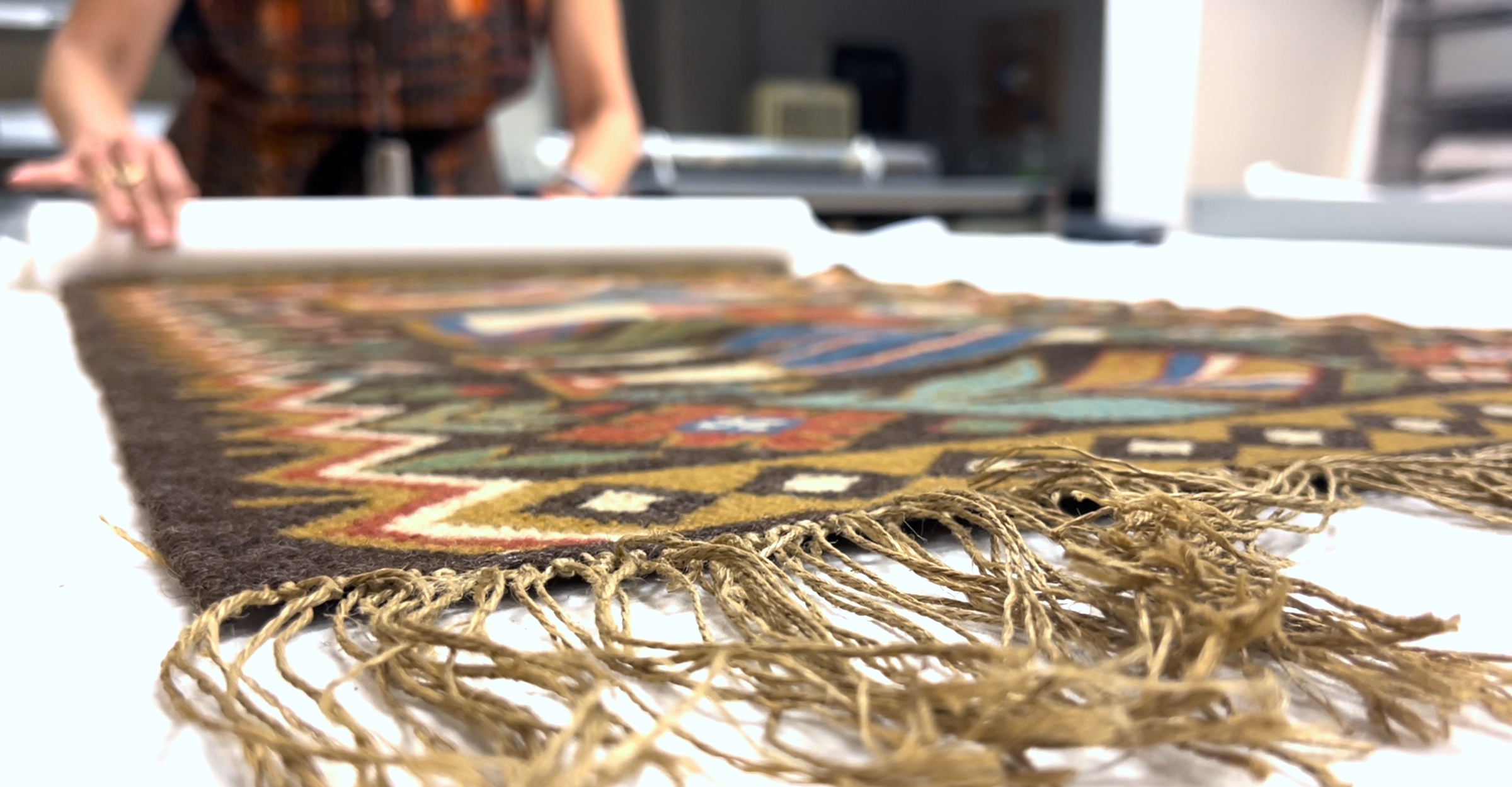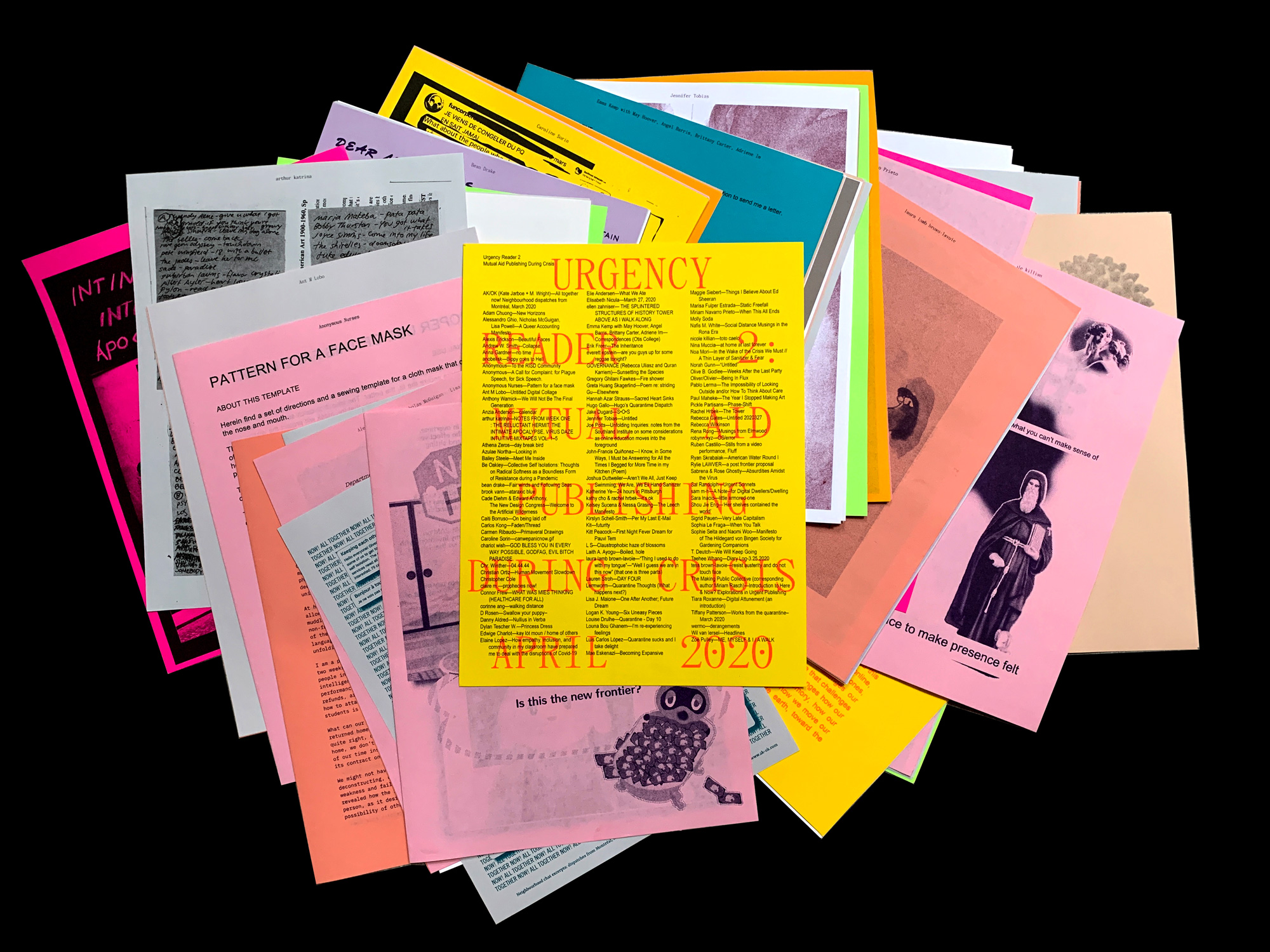Art and Activism: Eric Hirsch on collaborations to end homelessness crisis
Professor Eric Hirsch
Interview by Zari Apodaca
PAL Hero Slider
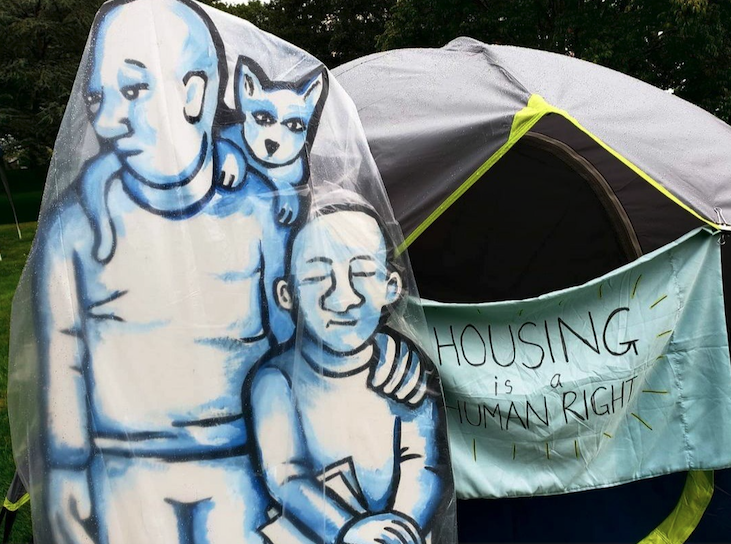
Space Transformation Station, Cardboard cut-out, 2022. Courtesy of STS and @MinioMindWarp. 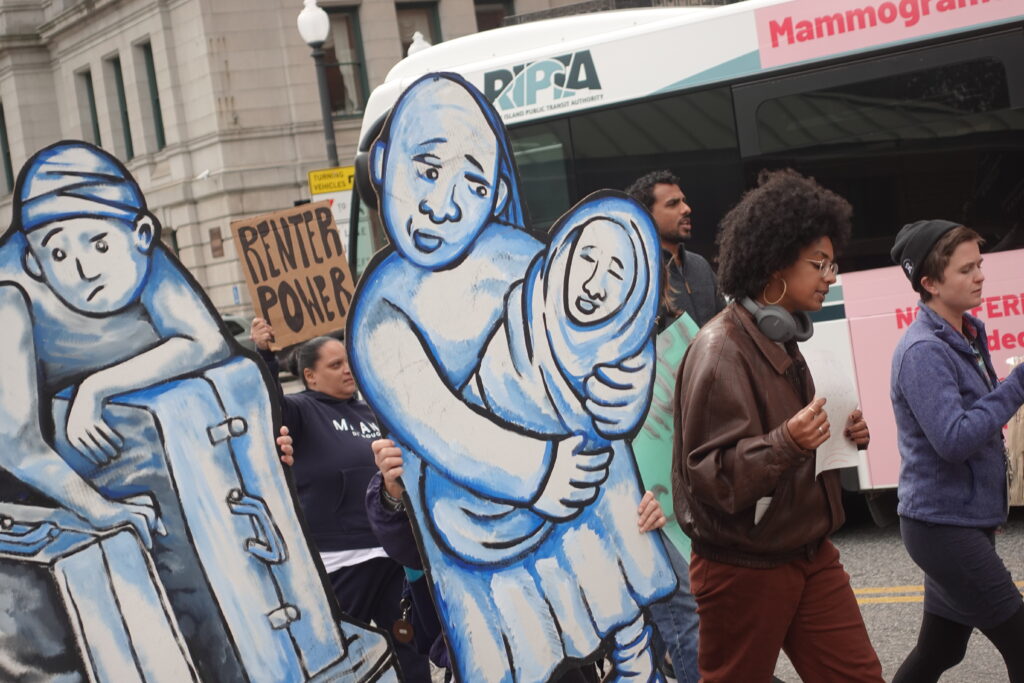
Space Transformation Station, Cardboard cut-out, March 2022 rally at the RI State House. Courtesy of STS and @MinioMindWarp.
While art featuring political statements can be dated back to the 18th century, Dadaism brought about the intersection between activism and art. In response to the horrific events which took place during the First World War, Dada art aimed to challenge conformity and social norms of society. In more recent times, there is no absence of similarly tragic events happening everyday right before our eyes, which calls for activism. Art has become one of the greatest assets, more than ever, in raising political and social awareness and provoke commentary surrounding the hardships that plague our society.
Providence College Sociology and Anthropology professor Dr. Eric Hirsch has dedicated his professional work to the fight for social justice. In the fall of 2021, he led homeless advocates to protest the ongoing homelessness crisis in Rhode Island at a public forum with Governor Dan McKee. They were accompanied by life-size cutouts created by Big Nazo founder and artistic director Erminio Pinque which showcased powerful and striking visuals to draw attention to a grave issue that must be addressed by state legislation.
I was granted the pleasure of interviewing Dr. Hirsch about his advocacy work this summer. An issue I have great interest in, I received some insight on the work that Dr. Hirsch and his fellow advocates do to insure safe housing for all Rhode Island residents.
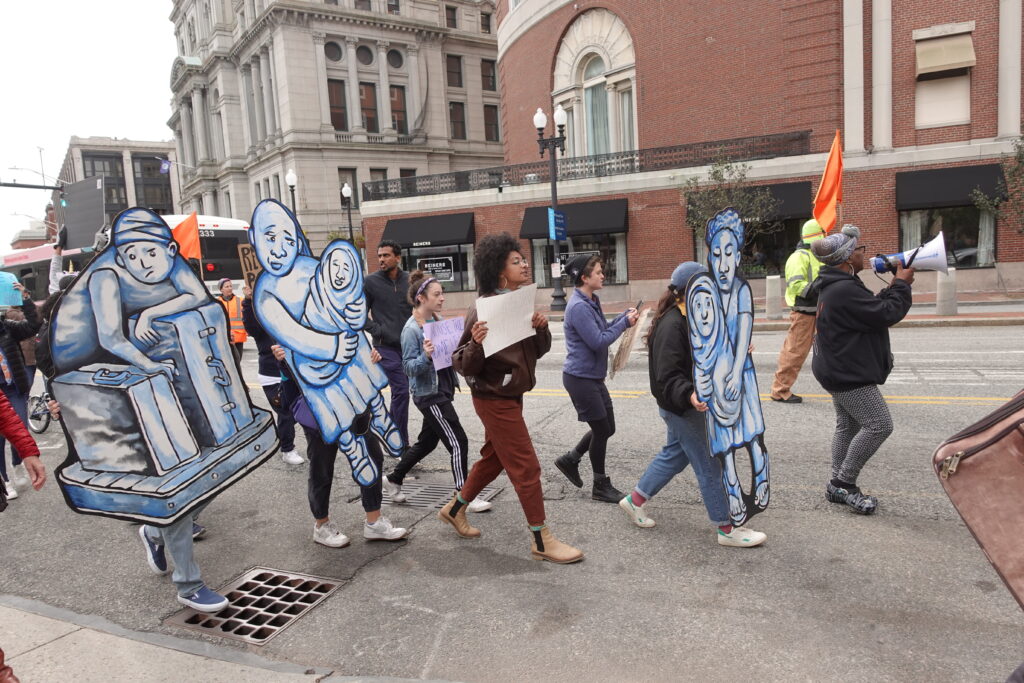
Space Transformation Station, Cardboard cut-out, March 2022 rally at the RI State House. Courtesy of STS and @MinioMindWarp.
Zari Apodaca [ZA]: Last fall, advocates for the state’s homeless crisis brought life-size cutouts to represent those who are currently homeless in Rhode Island at a public forum with Governor Dan McKee. Can you tell me about how this intervention came to be and the artists and communities involved?
Dr. Eric Hirsch [EH]: We started to organize around the issue of the unprecedented numbers of people experiencing unsheltered homelessness in the state. We were up in the 400 to 500 range and the state, particularly the governor, was doing nothing about this. The Brown student group HOPE (Housing Opportunities for People Everywhere) contacted Erminio at Big Nazo and Space Transformation Station to ask for any ideas to support our work. He came up with the idea of the cutouts and produced 10 of them for us. Our first protest was to put up 30 tents on the Statehouse lawn. We did not have people in them due to the pandemic. The cutouts became the backdrop for our press event.
ZA: If the homelessness crisis in the state of Rhode Island is quite manageable, as you stated in an interview with GoLocalProv, why do you think it has gone unsolved for so long?
EH: It’s all about the politics. If politicians think that they can improve their election chances by ending homelessness, then that’s what they’ll do. We’re trying to convince them that it will hurt them politically if they continue to ignore the issue.
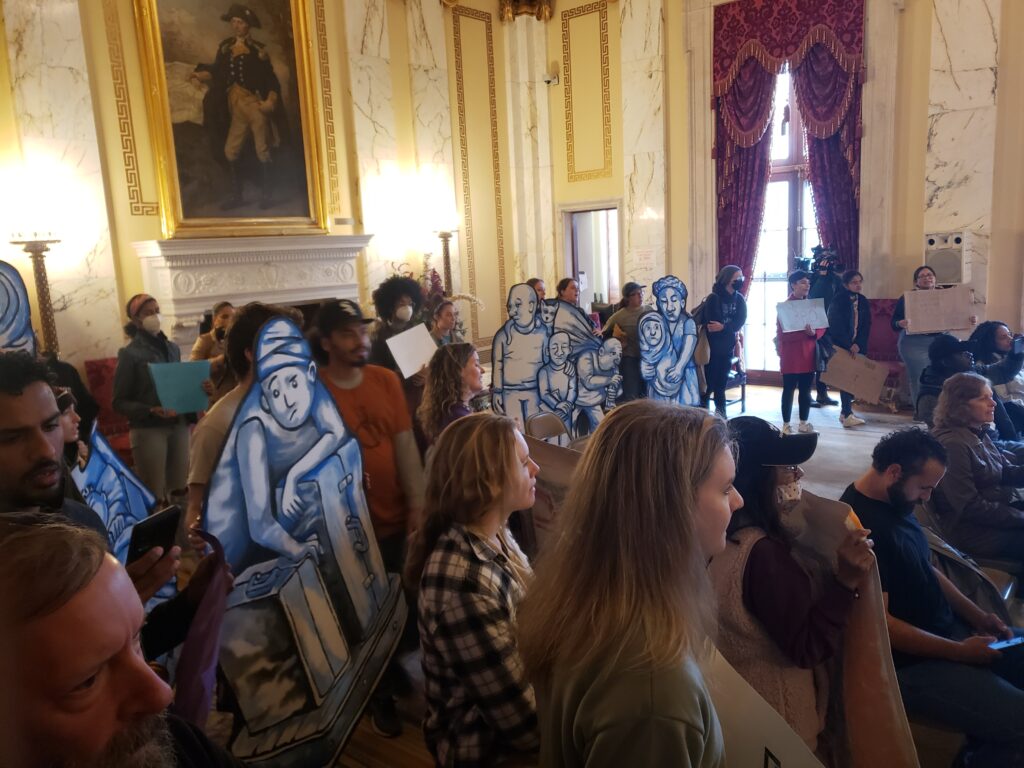
Space Transformation Station, Cardboard cut-out, March 2022 rally at the RI State House. Courtesy of STS and @MinioMindWarp.
ZA: As a Rhode Islander myself, it’s no secret that government employees are well taken care of, some could say beyond their means. Do you think the crisis could be better solved if the Rhode Island state government focused less on helping their own and reallocated funds to the homeless population in Rhode Island?
EH: I would not blame state employee salaries at all. I feel the dramatic cut in taxes for the wealthy under Governor Carcieri in 2010 cost the state a lot of revenue. We started running structural deficits every year after that. I would increase the top marginal tax rate to 9% from 6%. In any case, we have a ton of money now with the $1 billion+ American Rescue Plan funds that we’ve received to deal with the impact of Covid.
ZA: What impact or engagement did this artistic visual have on the McKee administration in calling attention to the homelessness crisis in the state?
EH: We followed up the tent encampment with a series of protests at the governor’s 2030 events. These were intended to give the governor guidance on how to spend the $1 billion the state received from the federal government to deal with the impact of Covid-19. We brought the cutouts to all of these events, around six of them. He finally, after 3 or 4 of our protests agreed to get those outside into hotel rooms. I think the cutouts were the key to our impact as they forced everyone at the event to think about the plight of people outside. We did not even need to say anything about the issue to have an impact, though we did participate in the discussions at the events as well.
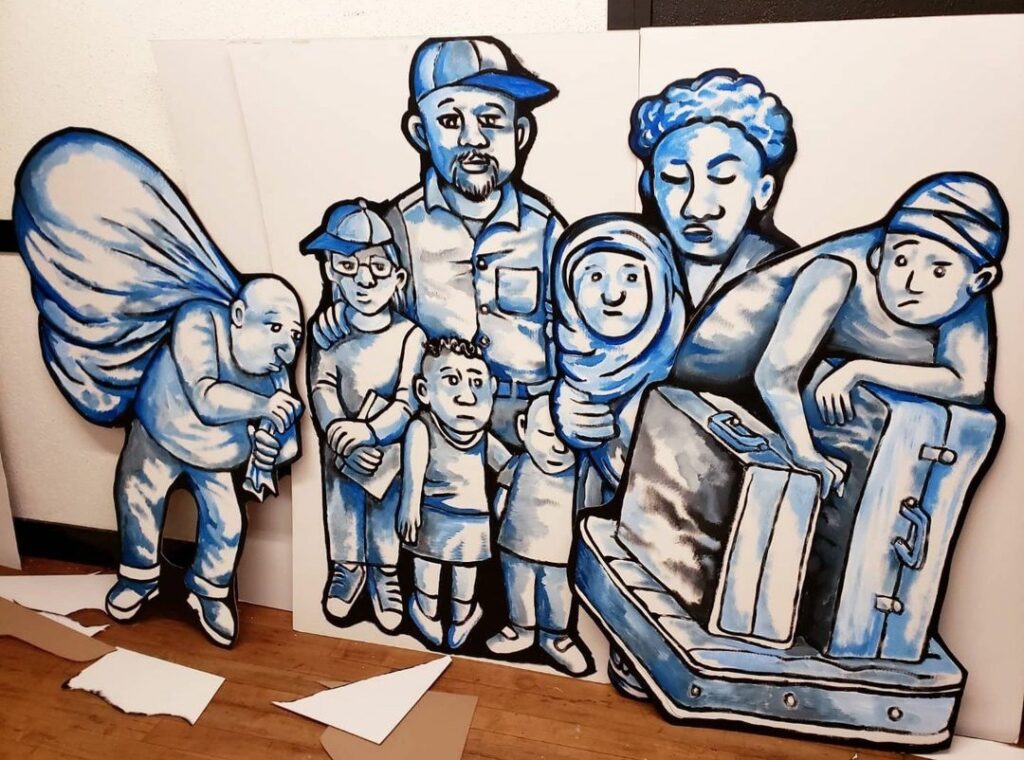
Space Transformation Station, Cardboard cut-out, 2022. Courtesy of STS and @MinioMindWarp.
ZA: Speaking of this artwork, was it a deliberate choice to have the depicted humans blue in order to address the winter months in RI that make it absolutely inhumane for people to reside outside?
EH: That’s a good question that Erminio would have to answer. I do know that the cutouts really popped in photos and on television. The contrasting black and blue really showed up visually.
ZA: In addition to the life-size artworks, advocates passed out red flyers that state, “Please Help RI”. Red has many connotations including life, emergency, and anger. One could say all these connotations symbolize a great amount of passion. Can you speak on if this was a deliberate choice to call attention to the lives at stake due to the ongoing crisis?
EH: The flyers were produced by interns at BHLink a mental health crisis hotline. Again, I’m not sure why red was chosen for the flyers.
ZA: Art has historically been tied to activism, do you find that art is an important tool for activism, and if so, how?
EH: I do feel that art is crucial for effective activism. Flyers, posters, protest signs, and the cutouts we had all made our message clear without having to address the issue verbally. The symbolism reinforces the emotion that accompanies our sense of injustice. Big Nazo, Bread and Puppet theater are examples of how art can advance movement goals.
